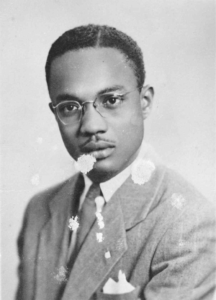
Making Peace Into War
The first of Portugal’s African colonies was also the first to gain independence. It was not, unfortunately, a smooth road to freedom.
Most of the trade in Portuguese Guinea was controlled by a single group – Companhia Uniao Fabril – and their subsidiary companies. One of those subsidiaries, Casa Gouveia, controlled the docks. And Casa Gouveia treated its workers horrendously.

On 6 March 1956, dockworkers decided to strike to protest their wages and working conditions. The strike started off without violence, the security forces having been ordered to refrain from using force against the protestors. When the workers realized the security forces were holding back, they attempted to take the entire dock by force. Security reinforcements were needed, and although the strike was put down, the police still felt humiliated.
Nor did the strike create any changes. Wages stayed low and conditions did not improve. The situation was bad enough that the Army Under-Secretary-of-State vocally advised that if the wages did not improve, a worker’s revolt was likely. No one bothered with his advice.
After the 1956 strike, an organization to work for the independence of Portuguese Guinea was created. At first called the African Independence Party, they later changed their name to the African Party for the Independence of Guinea and Cape Verde, known by its initials of PAIGC.
PAIGC, led by the highly educated Amilcar Cabral, dedicated itself to bringing about independence in a nonviolent manner. PAIGC supported the dockworkers, who believed that another strike was necessary, although they were not directly involved in the strike negotiations themselves.

On 3 August 1959, dockworkers set a meeting with the manager of Casa Gouveia. Unknown to the company, they planned a general strike at 3 pm if their demands were not met.
The meeting was not successful, and the dockworkers ceased work as planned. Casa Gouveia had no plans to accept a workers’ strike, and the PIDE (political police) were called in.
The humiliation of the 1956 strike was still fresh in the minds of the security forces, and when they saw the dockworkers barricading themselves behind the gates of the quay, armed with harpoons and oars. Without hesitation, the police opened fire and lobbed grenades into the milling crowd.
The workers on the quay had nowhere to go, they were like fish in a barrel. Some were able to escape on their boats, but within five minutes there were fifty dockworkers dead. The PIDE waded in, and the dockworkers who had not escaped or been killed were arrested – to be tortured later in their cells.
This event, now called the Pidjiguiti Massacre was the final straw in the long decision about how to gain independence for Portuguese Guinea.
PAIGC, seeing the violence at the docks, realized that any movement toward independence was going to require violence. The Portuguese were not going to leave willingly.
It also swung public opinion in the colony. A united public began to support a movement that would gain them independence by any means.
And from there the thirteen-year-long war, The Guinea-Bissau War of Independence, became assured.
The civil war pitted 10,000 soldiers of the PAIGC against over 35,000 Portuguese and African troops. It became known as “Portugal’s Vietnam” because of the drain on Portuguese lives and money.
It ended with the Carnation Revolution in Portugal in 1974, and the revolutionary Marxist- leaning PAIGC instituted single-party rule.
The war for independence was won, but the war for survival had just begun.
- August 3, 2020
- Culture , History , Interesting

